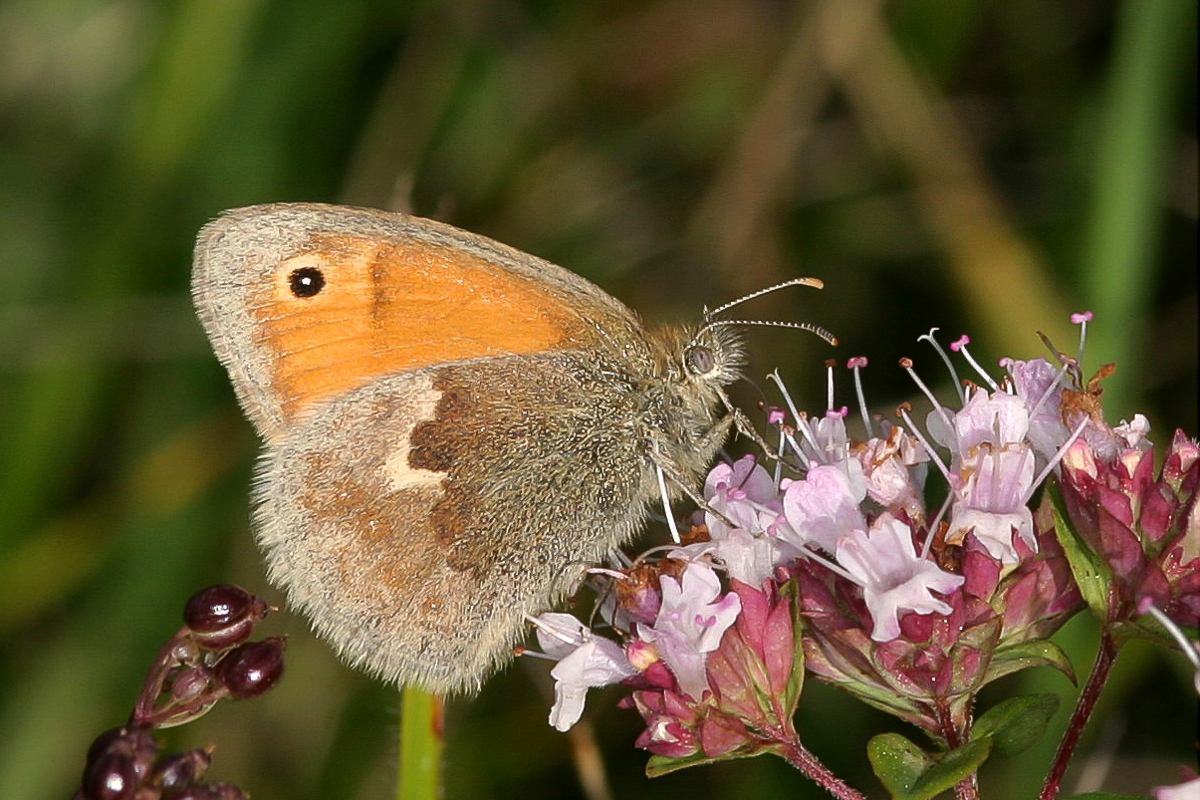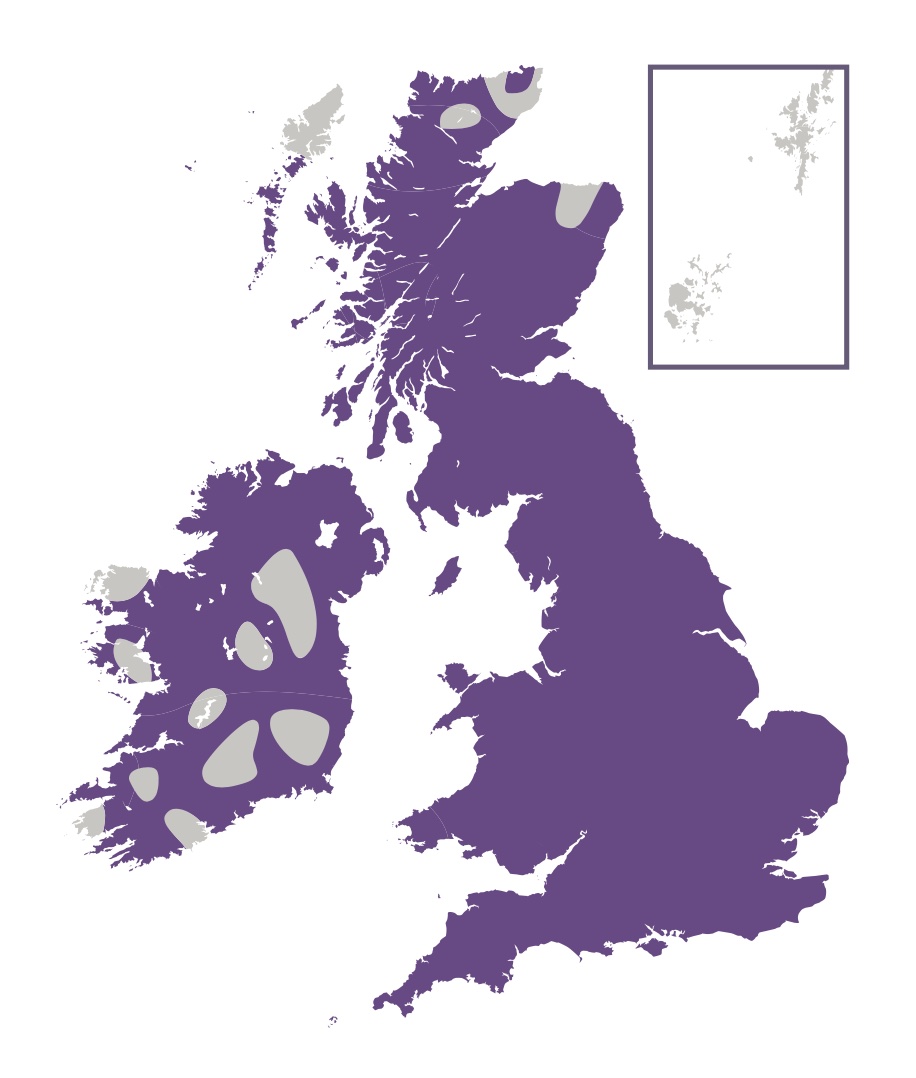
Photo © Peter Eeles
Despite its name, the Small Heath is not confined to heathland and can be found in a wide variety of habitats. The main distinguishing feature of this species is that this is the smallest of our 'browns' and is closer in size to a skipper, Common Blue or Brown Argus than its relatives, such as the Meadow Brown. However, its fluttering flight is quite different from that of the skippers and blues and is relatively-easy to identify in the field. This charming little butterfly always settles with its wings closed, where the eye spot on the underside of the forewing is usually visible, acting as a decoy to any predator. The forewings are tucked behind the hindwings when roosting for long periods, or in dull weather, the butterfly looking quite inconspicuous as the browns and greys of the underside of the hindwing blend in with their surroundings.
This is a widespread butterfly and can be found over most of the British Isles, with the exception of Orkney and Shetland and mountainous regions. It lives in discrete colonies and adults rarely venture far from the colony. However, the odd adult will venture further afield and will colonise nearby habitat if it is suitable.
Males set up territories where they can be found perching, although they also spend time patrolling in search of a mate. When a male encounters another, the pair flies a few metres up into the air before separating. Virgin females will also zig-zag over the vegetation in search of a mate. Mating may happen at any time of day and a mating pair may remain coupled from as little as 10 minutes up to 5 hours.
Mated females tend to avoid male territories, flying over sparse grassland where they lay their eggs. Both sexes feed on a variety of nectar sources.

This species can be found in many different habitats, especially those that are more open, such as grassland, heathland, railway embankments, disused quarries, meadows and sand dunes. It occurs only sparingly in woodland where it can be found in ones and twos along wide woodland rides. Wherever it occurs, the adults prefer a shorter grass sward than closely related species.
Adults feed primarily on brambles (Rubus spp.), buttercups (Ranunculus spp.), Common Fleabane (Pulicaria dysenterica), Devil's-bit Scabious (Succisa pratensis), Greater Stitchwort (Stellaria holostea), Kidney Vetch (Anthyllis vulneraria), ragworts (Jacobaea spp.), Tormentil (Potentilla erecta) and Yarrow (Achillea millefolium).
The primary larval foodplants are bents (Agrostis spp.), fescues (Festuca spp.) and meadow-grasses (Poa spp.).
